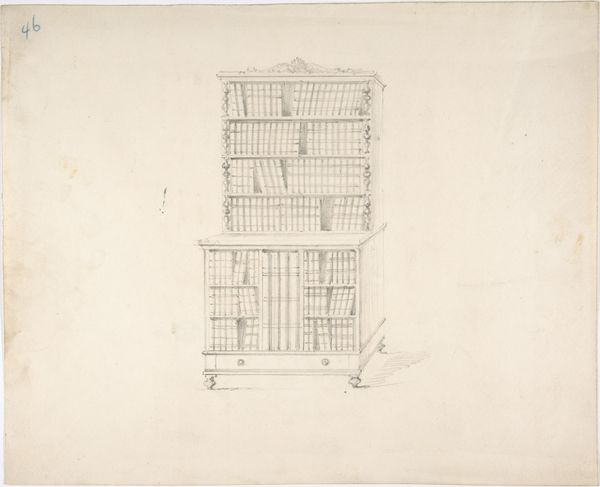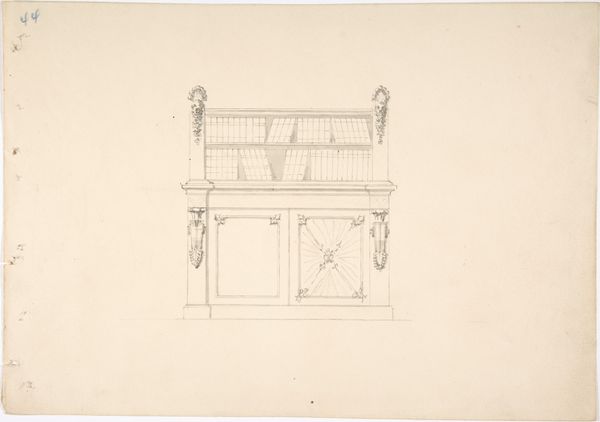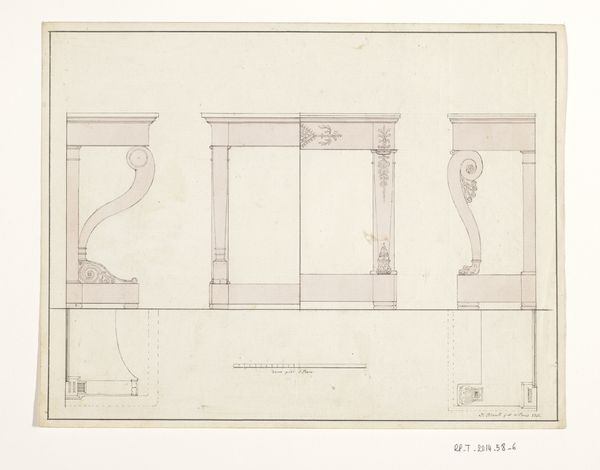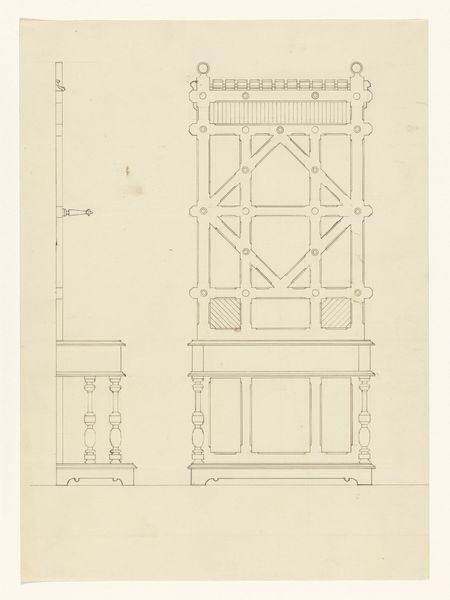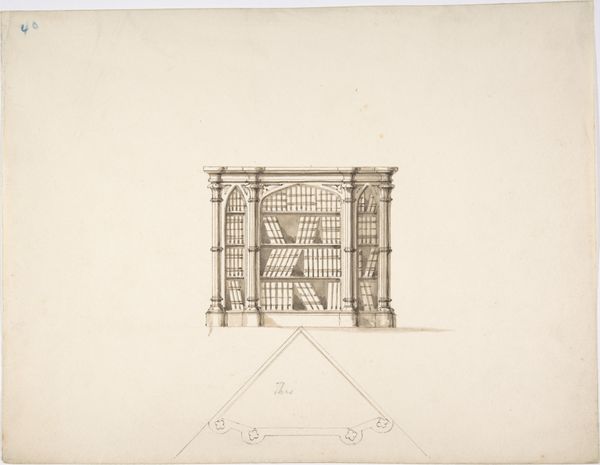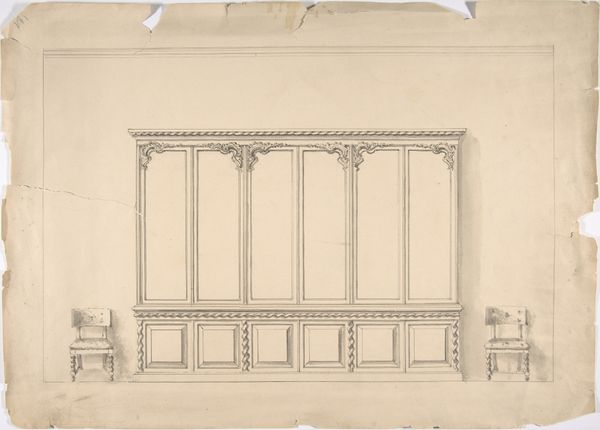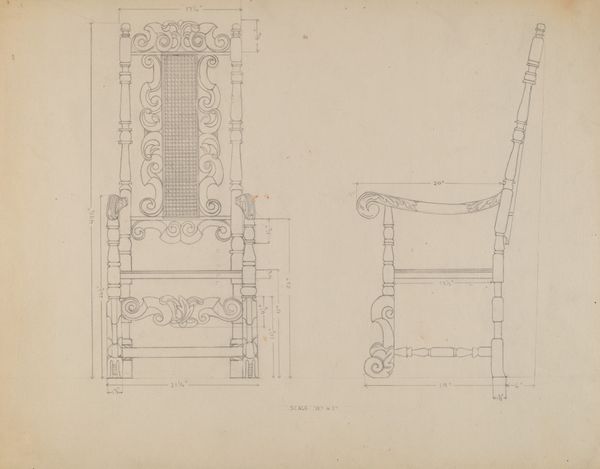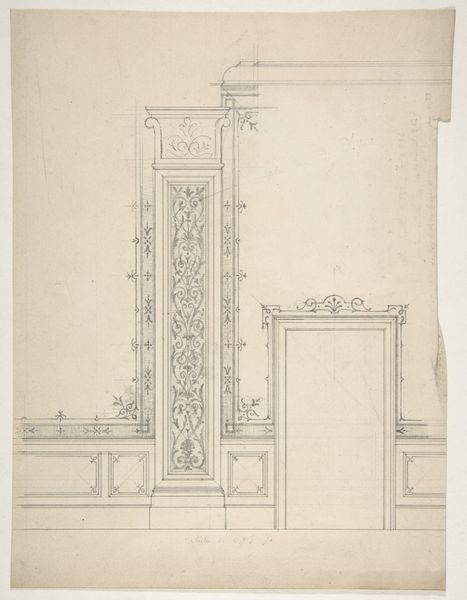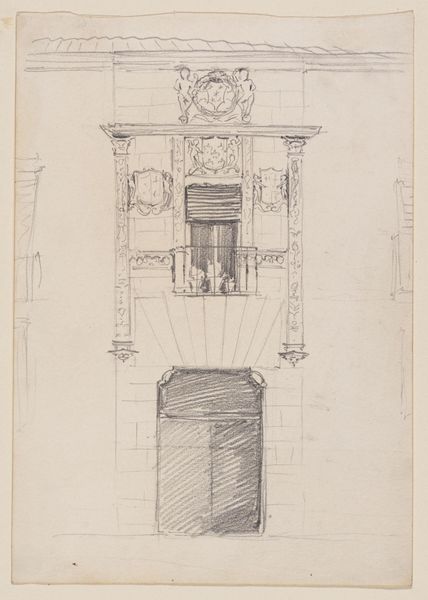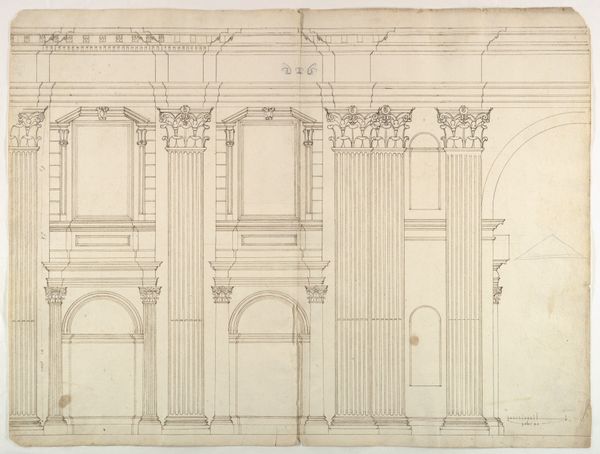
drawing, print, etching
#
drawing
#
medieval
# print
#
etching
#
etching
#
geometric
#
line
Dimensions: 545 mm (height) x 444 mm (width) (monteringsmaal), 525 mm (height) x 390 mm (width) (plademaal)
Editor: So, this is Georg Hoffmann’s "Korstole i Roskilde Domkirke," an etching from 1833 depicting choir stalls. The line work is just incredible. What do you make of this piece, particularly considering it’s a print? Curator: I'm immediately drawn to the reproductive labor involved. Etchings allowed for wider distribution of architectural designs, shaping aesthetic tastes and, importantly, impacting craft production. Think about how this print circulated amongst carpenters and artisans. It's not just a drawing, but a potential template. Editor: That’s fascinating! It suggests that this artwork had a practical application beyond just being viewed as art. Curator: Precisely. The etching becomes a tool. It also collapses distinctions between "high art" and craft. Was Hoffmann interested in accurately portraying the original or reimagining its form through his own labor and materials? How does the act of reproduction alter our perception of the original medieval craftsmanship? Editor: That’s a great point. It really makes you think about the intent behind documenting these choir stalls. Was it purely archival, or something more? Curator: The material conditions are also crucial here. The availability of etching materials, the social networks facilitating distribution – these factors dictate how this medieval design entered 19th-century visual culture and, consequently, impacted subsequent design and fabrication. Editor: I see now. So instead of simply viewing it as a historical document, we’re looking at how its creation and circulation shaped material culture itself. Curator: Exactly! It prompts us to consider the social life of objects, the labor involved in their creation, and how consumption and reproduction shape our understanding of history and artistic value. Editor: That’s a completely different perspective than I initially had. I was focusing on the lines and the detail, but you’ve shown me the importance of thinking about production, labor and circulation. Curator: And hopefully, this perspective enriches your future engagements with art and its place in our society.
Comments
No comments
Be the first to comment and join the conversation on the ultimate creative platform.
